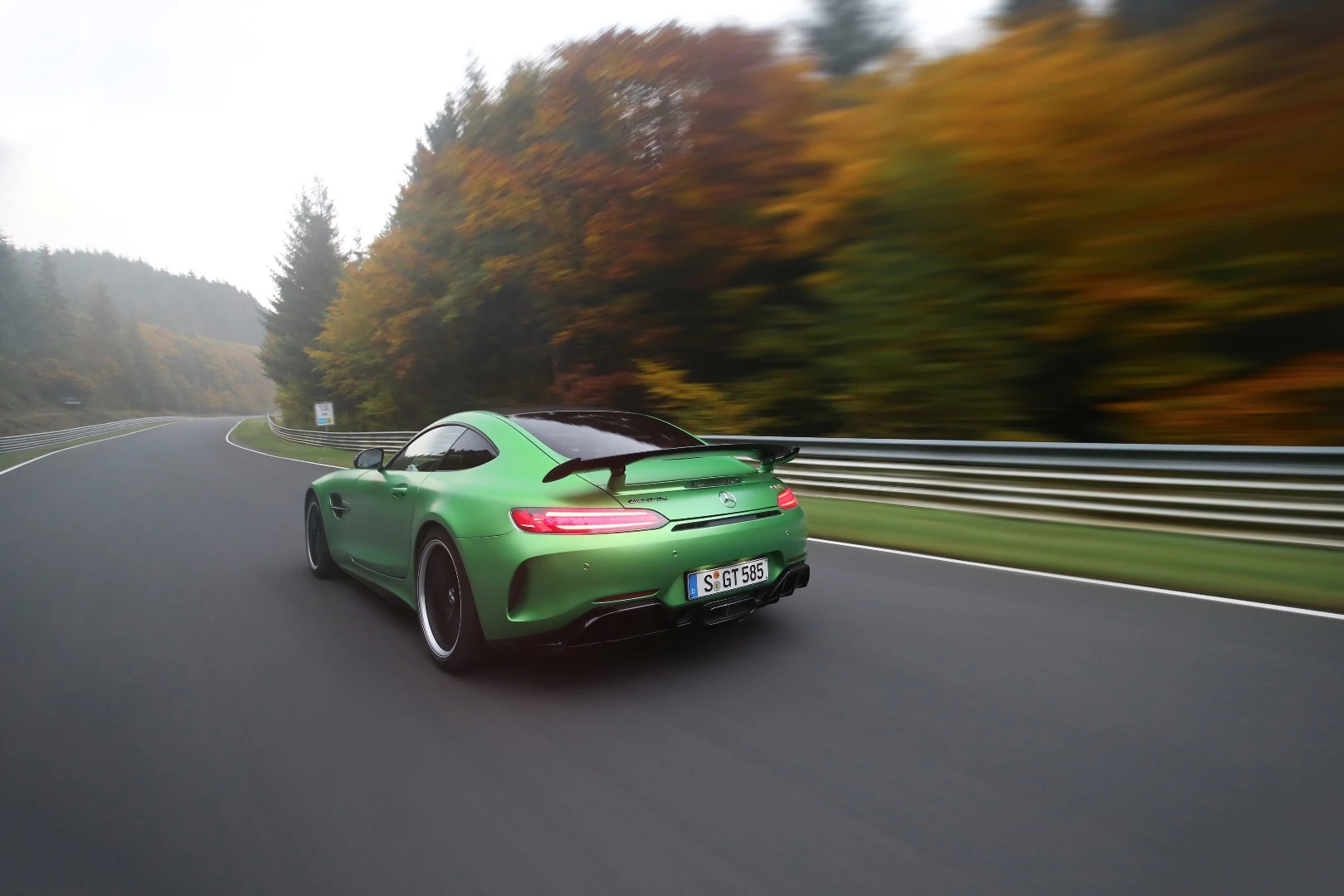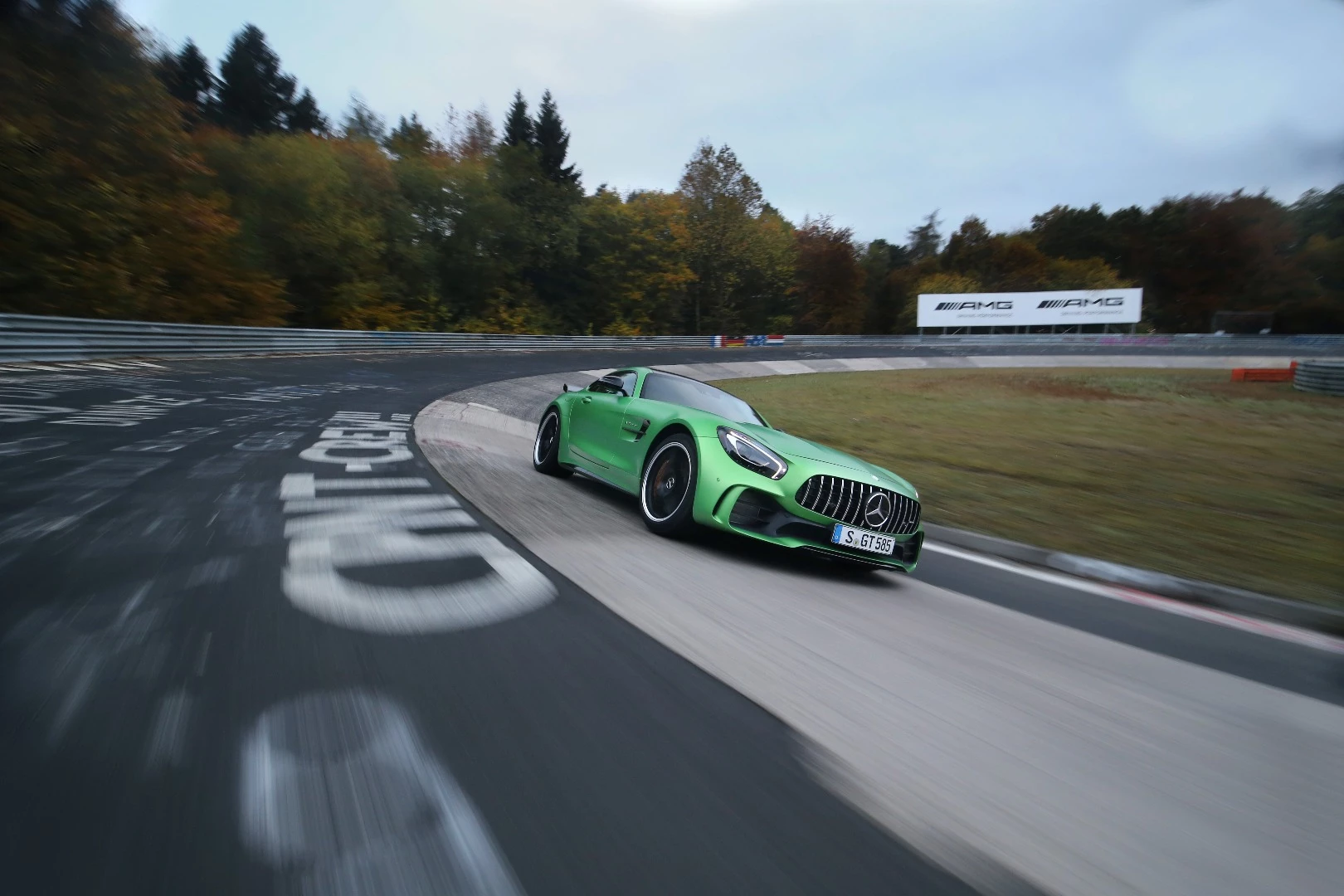The Nürburgring Nordschleife has become the ultimate test bed for anyone who wants to prove their sports car is the real deal. Records around the 20.8 km (12.9 mi) stretch of German tarmac have started tumbling with alarming regularity recently, most notably among a new breed of hyper-hatch. Now, Mercedes has set a new rear-drive record for production cars with the AMG GT R.
Like so many of the new record holders around the Nurburgring, the AMG GT R was designed with a real focus on clocking out an seriously impressive lap. It was launched at the Goodwood Festival of Speed earlier this year, but much of its testing and development was carried out at – you guessed it – the famous German racetrack.
That development drove Mercedes to fit a new rear-wheel steering system, which turns in the opposite direction to the front wheels at low speed, and in the same direction at higher speeds for a greater sense of stability. A special race-inspired traction control system with nine different settings also features, and active underbody aerodynamics help shove it into the road even harder than before.
The end result is a car that lapped the Nordschleife in a scarcely believable 7:10.9 seconds, making it the sixth-fastest production car ever to clock a timed-lap. It's the quickest time from a rear-drive production car, too, comfortably usurping significantly more expensive cars like the Lexus LF-A and Ferrari 488 GTB.
As always, debate is likely to rage around the spec of the car that set the record lap. Every time someone sets a new record, naysayers (and the recently-usurped company) come out and argue the car was fitted with super-sticky tires, or running more power than stock. In this case, Mercedes has turned to sport auto for backup. The lap was filmed by the German magazine, which says no slicks or cut-slicks were used.
You can check out the record lap in the video below.
Source: Daimler











